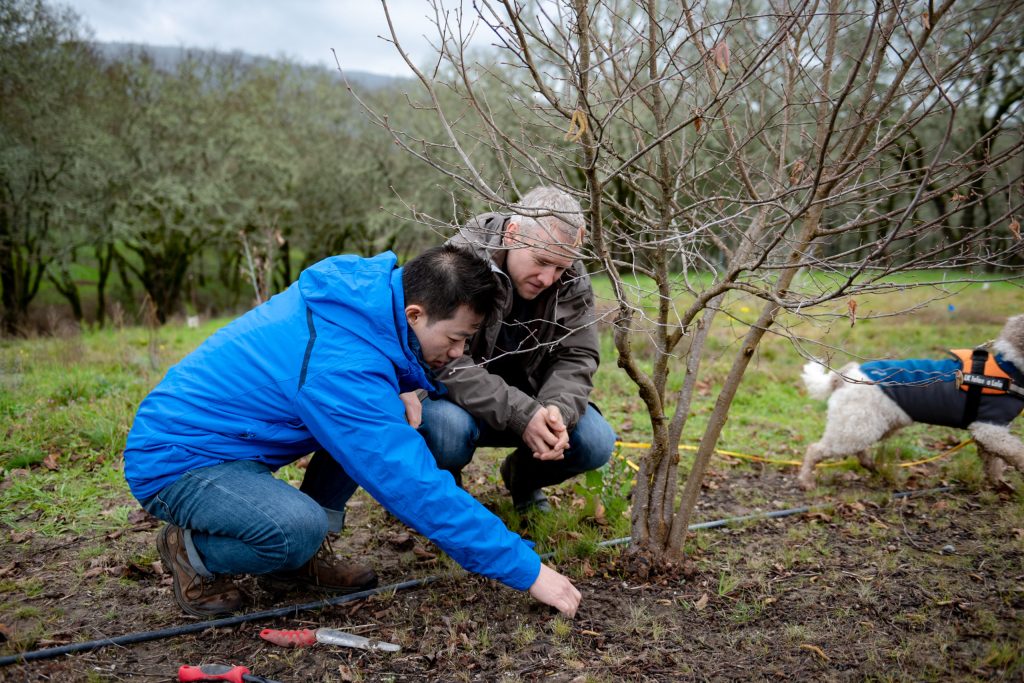Truffle Cultivation: A Comprehensive Guide for Rural Living and Homesteading
Truffles are highly prized gourmet delicacies that have been enjoyed by food enthusiasts for centuries. These underground fungi are found in various parts of the world, but only a few regions have been able to cultivate them successfully. In recent years, truffle cultivation has become increasingly popular among rural living and homesteading communities. The process of growing truffles can be challenging, but with the right knowledge and techniques, it can be a profitable venture.
In this article, we will explore everything you need to know about truffle cultivation as a rural or homesteading enthusiast. From understanding the different types of truffles to preparing the soil and planting inoculated trees, we will guide you through every step of the process.
Understanding Truffles
Truffles are an edible fungus that grows underground near tree roots under specific climatic conditions. They belong to the Ascomycetes family and are divided into two main categories – black truffles (Tuber melanosporum) and white truffles (Tuber magnatum). Black truffles grow in France, Italy, Spain while white ones grow mainly in Italy.
Black Truffle
Black truffle is commonly known as Périgord or French black truffle. It has a strong aroma with a flavor that ranges from nutty to earthy with hints of chocolate or coffee. Black truffle thrives well in calcareous soils at altitudes between 200-800 meters above sea level with temperatures ranging between 13-16°C during summer months.
White Truffle
White Truffle is also referred to as Alba or Italian White Truffle; it is highly valued because it’s rare than black ones due its difficulty in cultivating it artificially . Its scent is pungent yet delicate with flavors ranging from garlicky earthiness mixed with honeyed sweetness taste slightly more fruity than its counterpart. White truffle thrives well in soils rich in clay, limestone with high humidity and temperatures ranging between 10-15°C during the autumn months.
Preparing the Soil
The type of soil used for truffle cultivation is critical to their growth and quality. Truffles grow best in calcareous soils that are alkaline, porous, and have good drainage. The ideal pH range for growing truffles is between 7.5-8.3.
Before planting inoculated trees, it’s essential to test your soil’s pH levels using a soil testing kit or hiring a professional to carry out the testing on your behalf before amending it if necessary with either lime (if it’s acidic) or sulfur (if it’s too alkaline). Once you’ve achieved the desired pH level, prepare your land by removing any rocks, stumps as they can interrupt tree root growth which will be detrimental to truffle production.
Choosing Inoculated Trees
Truffles are cultivated through mycorrhization – A technique where the fungus spores are introduced into young trees’ roots at nurseries before transplanting them onto designated lands meant for truffle farming; this allows them to establish symbiotic relationships with their host trees throughout their life cycle thus enhancing its chances of producing quality fruiting bodies(Truffles).
There are different types of inoculated trees available such as oak (Quercus spp.), hazelnut (Corylus avellana), and filberts(Corylus maxima) since these species have been shown to produce quality yield after being successfully infected with Tuber melanosporum/ magnatum spores.
Planting Inoculated Trees
Once you have identified an appropriate site for planting inoculated trees based on favorable climatic conditions and soil type, select healthy seedlings from reputable nurseries specialized in cultivating mycorrhized plants intended for truffle farming purposes.
To plant the inoculated trees, dig a hole that is large enough to accommodate the root ball of your seedling while ensuring that it’s deep enough for the tree root system to establish itself well. Place the tree in the hole and backfill with soil mixed with organic matter such as compost or manure which will improve soil fertility over time.
Maintaining Inoculated Trees
After planting inoculated trees, it’s essential to maintain them properly to ensure high truffle yield. Here are some tips on how to care for your trees:
1. Irrigation
Truffles grow best when irrigated regularly during summer months- not too much water lest you cause waterlogging which can harm both fungi and host tree. It’s best practice not to stress your plants by letting soil dry out completely before watering again since both fungi and host roots require moisture all year round.
2. Pruning
Prune regularly according to specific species guidelines since different types of inoculated trees have unique pruning techniques; this ensures good air circulation, light penetration into plant canopy allowing truffle formation.
3. Pest control
Protecting your inoculated trees from pests is essential in maintaining their health and maximising production yields . Monitor them frequently for signs of disease or insect infestation such as borers or aphids; if detected early, they can be managed effectively using integrated pest management strategies like biological controls (i.e., nematodes) or chemical treatments (approved by relevant authorities).
Harvesting Truffles
The harvesting period varies depending on the type of truffle being cultivated and climate conditions in each region where farming occurs; typically black ones are harvested between December-March while white ones between October-January at peak maturity stages when their aroma is most pungent.
To harvest truffles safely without damaging either fungi or host tree roots requires skillful use of tools – usually hand-held rakes that loosen surrounding soils exposing fruiting bodies underneath ground surface level so farmers can easily reach and extract them without causing damage. Once harvested, truffles should be cleaned carefully to remove any dirt or debris before being stored in a cool dry place for preservation purposes.
In conclusion, truffle cultivation is an exciting venture that can yield high returns when done correctly. As a rural living and homesteading enthusiast, you have the opportunity to grow your own gourmet delicacies while contributing to the local economy. By following the steps outlined above, you’ll be on your way to becoming a successful truffle farmer in no time!


Leave a comment